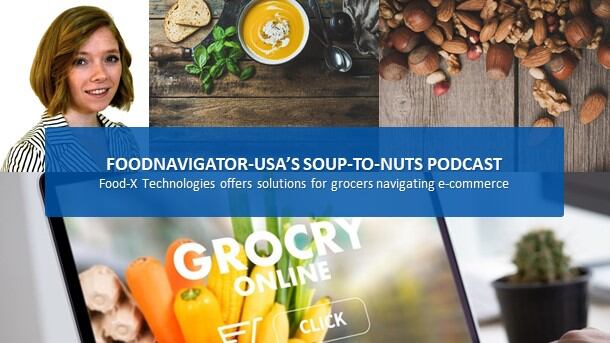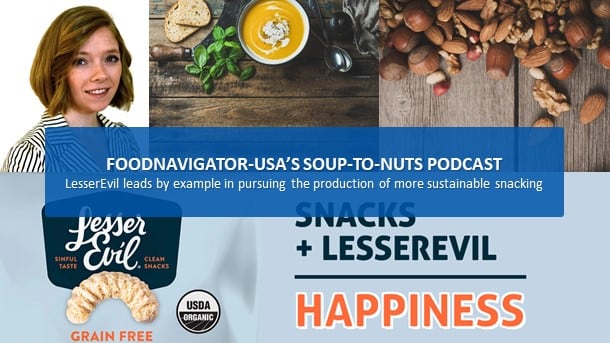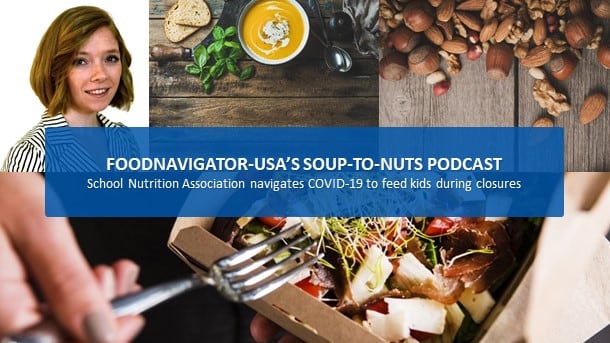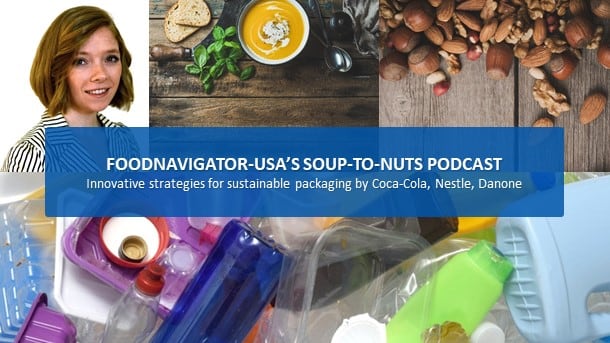According to Peter van Stolk, who is the CEO of the e-grocery startup Food-X Technologies, most grocery retailers were underprepared for online sales and fulfillment before the pandemic started and many of their struggles are exponentially exacerbated now that so many consumers are sheltering in place or fearful of exposure to COVID-19 if they ventured to their local supermarket.
In this episode of FoodNavigator-USA’s Soup-To-Nuts podcast, van Stolk breaks down the three most common problems grocery retailers face with e-commerce and explains how Food-X Technologies, which manages the process for Walmart Canada, has developed meaningful improvements around profitability, efficiency, and sustainability.
[Editor’s Note: Never miss another episode of FoodNavigator-USA’s Soup-To-Nuts podcast – subscribe on iTunes.]
Food-X Technologies offers an award winning, scaleable end-to-end e-grocery software platform that promises “everything you need to be the leading online grocer in your market deployed in nine months of less.” This ambitious claim is backed with more than 20 years of experience in online grocery. Food-X Technologies grew out of the Sustainable Produce Urban Delivery Inc., or SPUD, which started as an online community supported agriculture system that has evolved to be one of the largest online grocery companies in Canada, and now wants to help other retailers navigate the complicated and quickly evolving world of e-commerce.
Now is the time to improve e-commerce capabilities
While van Stolk recognizes creating an e-commerce platform for grocery is uniquely challenging compared to other industries, he says, it is the way of the future – or thanks to COVID-19 the present – and as such, grocers need to address it sooner rather than later.
“Groceries, if you think about it, is the last frontier for e-commerce … but we’ve seen a massive shift from adoption rate and now you’ve also seen trends that we’ve never seen before which were created by providers," such as Uber Eats, DoorDash and others, van Stolk said.
“And, what you’re seeing happening in groceries is you’re seeing sort of this legacy business now trying to fast-forward and figure out what to do with e-commerce and you have some very challenging aspects of the business,” he added.
Creating profitable fulfillment
Of all the challenges facing grocery retailers as they build online businesses, van Stolk said three stand out as the most prominent. The first is how to build an online fulfillment profitably, the second is how to address sustainability concerns around emissions and packaging associated with delivery, and the third is how to develop a system that is transparent and engaging at the local as well as national and international supply level.
To help grocers develop a profitable fulfillment strategy, Food-X Technologies first helps retailers recognize the tensions between their e-commerce and brick & mortar businesses. It then works with them to create software and hardware solutions that seamlessly build upon existing processes to bridge both on- and off-line business.
“What we’ve done is we’ve created software that connects with the existing legacy assets of the retailer” to “create a system that works for both the brick and mortar and e-commerce,” van Stolk said.
He explained the software focuses heavily on tracking inventory in real time so that neither online or in store shoppers experience out-of-stocks or are unable to access food that they thought would be available but isn’t. For online shoppers, this leads to frustrating substitutions or an inability to access the ingredients they need.
By creating transparency around inventory, Food-X Technologies also helps empower retailers, van Stolk added.
“When you have visibility in e-commerce, you have a different game. And I think that’s sort of one of the things that a lot of the grocery retailers don’t understand. Because as soon as you get the visibility, your marketing changes, the customer experience changes, how you communicate with the customer … all this information changes and gives you power,” he said.
Creating a plug-and-play hardware system
Next, Food-X Technologies looks at how it can combine its software with hardware, such as robotics, at a location that is convenient for retailers to create fulfillment facilities that can efficiently manage inbound and outbound demands.
Van Stolk explains that Food-X can work with any size facility based on the retailer’s market and business needs. So, this might mean opening a micro-fulfillment center within or adjacent to the retail store that ranges from 1,000 to 10,000 square feet, or it can help the retailer create a dark store – or a dedicated separate location that ranges from 10,000 to more than 75,000 square feet.
And it does this all with an eye on retailers’ bottom lines – making sure that the investment doesn’t exceed their budgets.
For example, it asks retailers “a boatload of questions” about what assets are available, how much it would cost to create a new store, what their targets are, and then it creates a plan that works within those parameters.
Offering local food, sustainable solutions
As Food-X Technologies works with retailers to sketch out their basic needs, it also helps them navigate two emerging challenges facing grocery e-commerce: a demand for local food, and consumers’ growing sustainability concerns, including food waste.
“Consumers … love local because they want to support local and the local food economy,” yet most distribution centers are not set up to include food from local players, van Stolk explained. “What we’ve done at Food-X Technologies is we’ve created a software system that allows retailers to basically have pure visibility on their inventory,” which also allows them to include more options and sell them efficiently.
Failure to efficiently sell product in a timely fashion doesn’t just delay profits, but it also can lead to food waste, which is an increasingly important concern for consumers. That is why Food-X Technologies focuses on eliminating waste and reducing costs while also creating a smaller ecological footprint.
One way it has reduced waste to 0.5% compared to most retailers 6% is by using a commissary kitchen to make meal kits and other high margin products.
Also with regards to the environment, Food-X Technologies has nixed plastic bags in favor of reusable totes and plastic bins. When it picks these products back up from shoppers, it also picks up empty milk bottles and local products to help contribute to the circular economy. It also optimizes delivery routes to reduce the number of vans on the road and uses non-emitting vehicles, like bikes, when possible.
Finally, Food-X Technologies is reducing its footprint and costs to retailers by combining multiple banners under one roof when possible. This not only lowers its carbon footprint, but it also improves unit economics because its system allows the same vehicle to deliver for different grocery banners.
Ready to grow
After testing and fine-tuning its approach with Walmart in Canada, Food-X Technologies is ready to expand its reach and offer a helping hand to retailers throughout North America, Europe, and Asia – all of which have seen a spike in consumer interest in e-commerce during the current pandemic and all of which likely will see continued interest once coronavirus is under control as consumers will then have a better understanding of the benefits of buying groceries online and a higher trust in the system.




